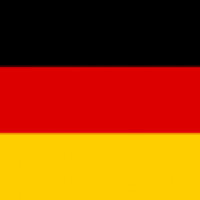Summary:
A German university offers a technology to print the conduits submerged in dense non-miscible solvents, such as fluorocarbons. It is characterised by a superior performance compared to conventional methods: Viable cells were shown 24 hours after the printing process, as well as after 21 days in culture. Industrial partners are sought for licensing agreements.
Description:
Bioprinting technologies recently appeared as important tissue engineering alternatives for regenerative medicine and organ transplantation. This novel approach for printing of tissues substitutes is based on the submersion of simultaneously printed cell-hydrogel structures into a non-toxic perfluorodecalin liquid substrate. Not only has it been achieved to develop a robotic platform for 3D-printing, but also to combine natural or synthetic hydrogels with human mesenchymal stem cells.
A German university developed a technology that allows to print the conduits submerged in non-miscible solvents of high density, such as fluorocarbons (e.g. C12F27N), that support the printed structure while it is being generated. This results in superior performance in relation to other methods. The hydrophobicity and high density of the fluorocarbon help to control the deposition of each individual droplet, resulting in a high degree of precision of the 3D-printed construct, which has been proven to remain long-term stable. Furthermore, live/dead-staining and staining with the fluorescent stain DAPI (4′,6-Diamidin-2-phenylindol,) showed viable cells 24 hours after the printing process, as well as after 21 days in culture.
In a special embodiment, the German university’s invention describes a simpler way of reproducing the structural hierarchy of multiple tissue substitutes using an inkjet drop-on-demand (DoD) bioprinting approach. This novel strategy for cell printing can therefore be used in the future for broad applications in the field of tissue engineering and regenerative medicine. In particular the method is suitable for printed tissue substitutes with high geometrical complexity.
Partners from biotechnological and pharmaceutical industry are sought for license agreements to use the technology.
Type (e.g. company, R&D institution…), field of industry and Role of Partner Sought:
Partners are sought for license agreements.
Type of partner: Industry: Biotechnology, pharmaceutical industry
Role of partner: License in to use and integrate in processes
Stage of Development:
Under development/lab tested
Comments Regarding Stage of Development:
Technology Readiness Level (TRL) 5. The technology has been validated in relevant environment.
IPR Status:
Patent(s) applied for but not yet granted,Patents granted
Comments Regarding IPR Status:
Patent applied for in Europe and US
Patent granted in Germany
External code:
TODE20211124001








